To sew a down jacket or a warm jacket, we need three types of fabric and applied materials:
- raincoat fabric - fabric for the "top";
- lining - fabric for the wrong side;
- insulation - fabric for laying between the "top" and the wrong side.
- tape for sealing seams;
- zip fasteners;
- buttons;
- laces, trailers and clips for drawstrings.
How to choose fabric for the “top” of a down jacket or jacket if you sew with your own hands
There are many fabrics for jackets.
For example, raincoat fabric "Canada", raincoat fabric "Alaska", raincoat fabric "Gloria", Duspo, raincoat fabric "memory", cotton memory, raincoat fabric "on milk" printed and plain, raincoat fabric on knitwear, memorial "prince", parka "Canada", raincoat fabric melange , bologna, raincoat fabric "taffeta", raincoat fabric "gabardine", taslan ... The list of fabrics can be continued.
Almost everything is suitable for sewing down jackets, and here you need to be guided, rather, by your own taste and idea of \uXNUMXb\uXNUMXbwhat you want to get in the end, rather than recommendations.
The most important component of raincoat fabric is water-repellent properties, which can be achieved both by impregnation with latex or polyurethane, and by melting the top layer of the fabric.
An example is the fabrics "barrier", "gloria", "bologna" which protect both from moisture and from wind. These are good materials, but they do not allow air to pass through, which makes products made from them not always comfortable to wear.
Therefore, it is important to look for membrane-coated fabrics. Membrane materials are two-layer and three-layer - the latter are more expensive.
|
Great example |
Or |
Women's coats Fur coats Jackets Capes
Air-permeable but water-resistant fabrics are less common. An example is taslan fabric, besides, taslan dries very quickly. It is made with various impregnations.
Here down jacket pattern example, which can be sewn from taslan
|
Separately, it is worth mentioning the raincoat suede with a membrane coating, which does not allow air and water to pass through, but removes sweat in the form of steam. It is a good choice for sewing jackets with or without down lining. |
Softshell fabrics are interesting - these are three-layer fabrics consisting of smooth stretch, membrane and fleece. A down jacket will not work out of them, but an unlined autumn coat will look great. Example softshell coat patterns
|
To simplify the process of cutting and sewing, you can buy for a jacket or down jacket already “a raincoat fabric quilted on a synthetic winterizer” and even a “raincoat fabric quilted on a lining”. With obvious advantages, here we may encounter both shortcomings of stitching and the inability to choose one of the fabrics separately.
It is better to sew laconic products from such sandwich fabrics, the open sections of which are easy to edging.
|
Here's an example which can be sewn from raincoat fabric quilted on the lining. |
Suitable and |
How to choose a lining for a jacket or down jacket
Lining fabrics are also very diverse. In order not to “spread the thought along the tree”, we will decide on the main types of lining fabric suitable for sewing down jackets, parkas or jackets:
- sliding;
- non-slip;
- quilted with insulation;
- and fur.
With sliding linings, everything is more or less clear - these are thin fabrics made from synthetic, natural or mixed fibers. They can be either dyed or printed. Remember that a pure silk lining can shrink with every wash, so this fabric should be soaked before cutting and allow enough stock and allowances to anticipate this very shrinkage.
Sliding pads are called differently. Often the name of the fabric depends on the nature of the weave. For example, satin, satin, diagonal. The linings are also jacquard, that is, the interlacing of the threads they have is some kind of complex pattern.
Names can also go according to the composition of the fabric. For example, polyester, viscose, nylon, silk.
 As a non-slip lining, you can use a cotton or woolen bike or flannel. If the fabric is completely natural, then do not forget the future significant shrinkage.
As a non-slip lining, you can use a cotton or woolen bike or flannel. If the fabric is completely natural, then do not forget the future significant shrinkage.
And remember, if the lining does not slip, it can only be used in products of large volumes - oversized, trapeze, cocoon.
A good option for a non-slip lining can be fleece - it washes well, does not shrink, allows air to pass through and retains heat well.
Quilted lining with insulation, in turn, also has several varieties. There are two main ones - the stitch seam is made with threads or it is a thermal stitch. Quilted lining on synthetic winterizer is more common. With the obvious advantages of this lining, of course, there are also disadvantages.
The main disadvantage is the inability to select materials individually. For thread quilting, large, easily unraveling stitches can be a disadvantage, and for thermal stitching, stiffness.
Fur lining, you guessed it, can be artificial or natural.
Natural fur is an expensive pleasure, requiring skills and a subtle understanding in choosing. As for artificial fur, the main criteria should be the softness of the knitted base of the fur and the small length of the pile.
Do not confuse faux fur and footer with "fur" fleece - they have different density of the knitted base, and the fur is different.
If you bought a “fur” footer instead of fur, you can make a lining out of it in the form of a vest or with sleeves, and put the down jacket on a regular lining.
Warming materials that are found and that can be used for sewing at home
Pooh
If you are sewing a down jacket with down, you may need a thick fabric for the cover so that the down jacket is machine washable. The cover with down can be removed from the down jacket, having previously removed the downy "quilt" from it, if such an option is provided for when sewing. It is convenient for washing.
When buying down, you need to understand that 100% down cannot be, small feathers will also come across among it. But, the higher the quality of the down, the less feathers.
If you collect down yourself or buy it in a rural area, do not forget to disinfect it before sewing a down jacket. This can be done in a workshop where pillows are restored.
The best goose down and with it no frosts are terrible if it is covered from above with a membrane raincoat fabric.
When using natural down, remember that it can cause allergies, especially in children.
Biofluff Sustans
Bio-fluff is a bio-based insulation that is patented in the USA. It has all the properties of down, but is hypoallergenic, more durable and holds its shape better. However, it is rare and expensive.
Hollofiber
 Hollofiber, polyfiber, fiberskin, isosoft and similar polyester insulation materials can be considered analogues of fluff in terms of thermal insulation properties. With them, you can also sew inexpensive jackets and down jackets, stuff pillows and children's toys.
Hollofiber, polyfiber, fiberskin, isosoft and similar polyester insulation materials can be considered analogues of fluff in terms of thermal insulation properties. With them, you can also sew inexpensive jackets and down jackets, stuff pillows and children's toys.
It perfectly tolerates machine washing, and together with the "membrane" any frost.
Of the shortcomings, only the form of release can be called - balls - you have to work with it, like with fluff.
Of similar materials, primaloft can be called - it is very soft, but resistant to deformation. It was used to sew warm clothes for the American army.
Wool
Natural wool insulation made from sheep or goat wool is also good and does not cause allergic reactions, but they absorb moisture strongly and have a noticeable weight compared to synthetics.
They require dry cleaning, as they shrink when washed.
Because of these shortcomings, the popularity of wool batting today is low. But wool is often added to synthetic fibers.
Mixed insulation retains heat well even at minus 25 and can withstand delicate machine washing.
For sewing and knitting clothes, fibers of alpago, llama, angora and cashmere goats are used.
Batting
Today it is rarely used, but in some cases batting is indispensable. The composition of batting can be either pure wool or half-woolen with the addition of cotton or synthetic fibers.
Of the obvious advantages, it can be noted that batting keeps its shape and heat well, but still it is quite heavy and, absorbing moisture, becomes even heavier.
Synthepukh
Perhaps one of the most common insulation for clothes. Sintepukh is also called artificial swan down. It is produced in different degrees of hardness and different thicknesses. The width of the roll is 150 cm, and the thickness is indicated by the numbers 100, 120, 150, 200, 300.
The number indicates how many grams of the material per square meter.
In order to roughly estimate the thickness by numbers, “weave” is a rather thin sintepuh, for demi-season products or for a separate stitching of the “top” and lining, 150 is of medium thickness, all-weather and “three hundred” is thick, winter.
Of course, a second thin layer can also be added to medium and thick insulation, but this is already a technology. Let's get back to materials science.
Tinsulate
Another artificial down, which is considered one of the most resilient, lightweight and warm insulating materials. Manufacturers claim that thinsulate is warmer than natural down. But it is very expensive and therefore we have not taken root.
Syntepon
Has a wide range of applications, wear-resistant, lightweight and soft. The old synthetic winterizer was relatively dense, and the new one has hollow fibers and has become better at retaining heat.
The main disadvantage is its lack of elasticity - it loses its thickness from wearing and washing, and is also not suitable for very cold winters. The limit of the synthetic winterizer is minus 10 degrees.
The second name of the synthetic winterizer is silicone.
The thickness is also determined by numbers from 50 to 600 g / m150, width - XNUMX cm.
Hollosoft
Lightweight and springy material similar to thinsulate. Its fibers are hollow and spiral. Hollosoft springs well and holds heat remarkably.
It can be used for sewing quilted items, for example, for a down jacket or a warm vest with fur trim.
Thermoloft
Another light elastic insulation that is suitable for sewing jackets and parkas, as well as overalls, down jackets. Density-thickness from 80 to 250 g/sq.m.
Sherstopon
Even by the name it is clear that this is a mixture of synthetic and natural fibers. It is made with the addition of sheep and camel wool.
Thickness and density are determined by numbers from 100 to 250 g / m150, width - XNUMX cm.
Sheartopon is used both for sewing clothes and for making sleeping bags and quilts.
Slimtex
Thin and dense enough insulation, which is suitable for sewing jackets, coats, raincoats and fur coats, as well as for ski pants and overalls. Slimtex is also used for sewing blankets, in the manufacture of shoes and hats.
This is a synthetic non-woven material, the density of which is also determined by weight from 100 to 250. Width - 150 cm.
Slimtex is a good choice for sewing winter overalls.


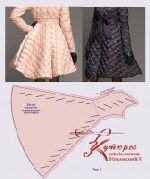

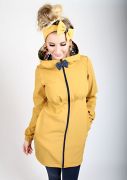
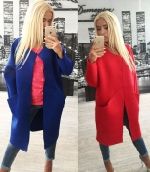
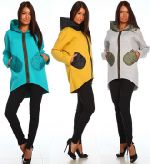


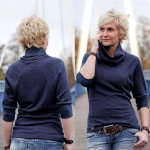


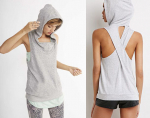
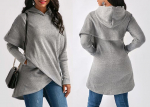
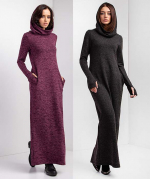

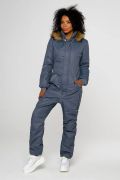

 Join my community on Viber...
Join my community on Viber...











